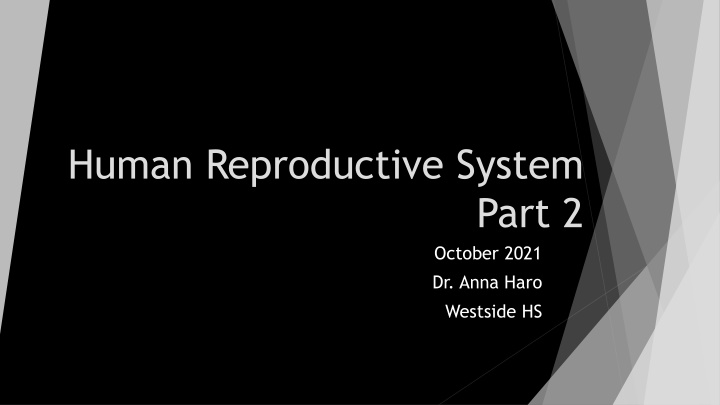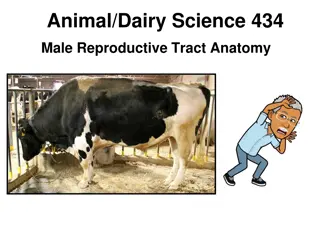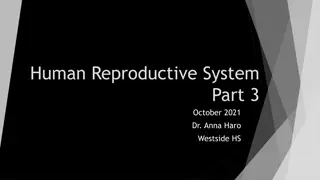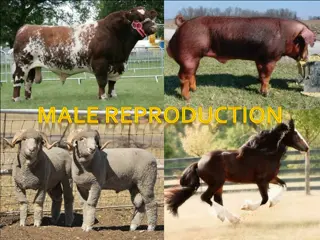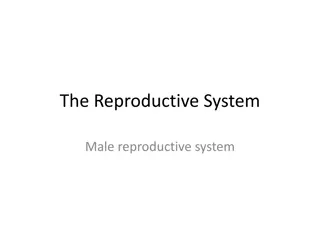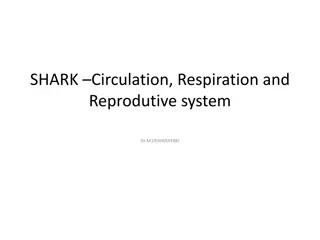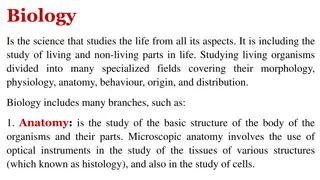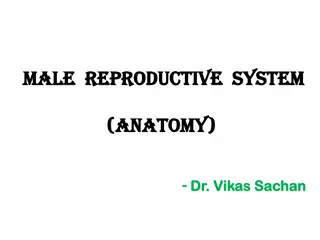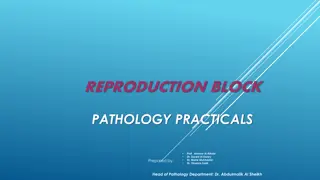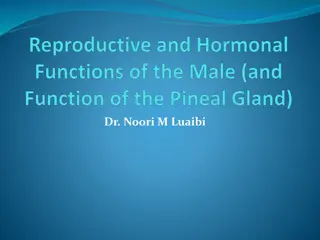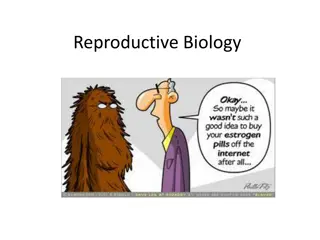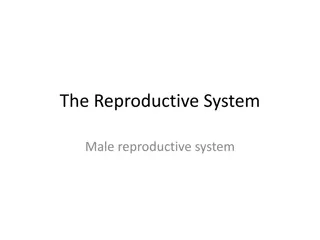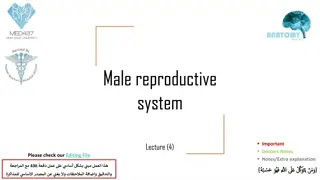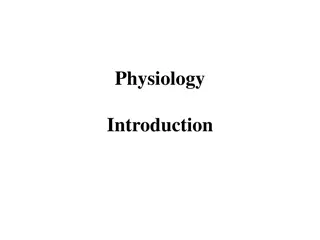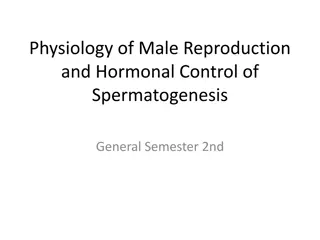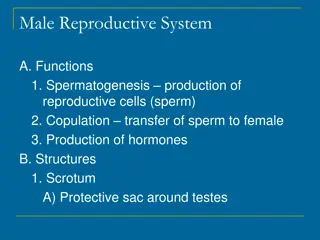Male Reproductive System Anatomy and Physiology
Biologically, the male reproductive system plays a crucial role in producing, maintaining, and transporting sperm and semen. Learn about the internal and external anatomical structures, the functions they serve, and the importance of male sex hormones in reproduction. Explore the male reproductive system's organs and their roles in urination, sexual intercourse, and procreation.
Download Presentation

Please find below an Image/Link to download the presentation.
The content on the website is provided AS IS for your information and personal use only. It may not be sold, licensed, or shared on other websites without obtaining consent from the author.If you encounter any issues during the download, it is possible that the publisher has removed the file from their server.
You are allowed to download the files provided on this website for personal or commercial use, subject to the condition that they are used lawfully. All files are the property of their respective owners.
The content on the website is provided AS IS for your information and personal use only. It may not be sold, licensed, or shared on other websites without obtaining consent from the author.
E N D
Presentation Transcript
Human Reproductive System Part 2 October 2021 Dr. Anna Haro Westside HS
LEARNING Objectives TEKS: 130.231.(c)(1)(A, & B) and 130.231.(c)(2)(A, B, C, F, & G) & (3)(B) Students will develop new knowledge of the anatomy and physiology of the male reproductive system (RS). Students will describe the internal and external male RS organs and structures. Students will compare the 3 different hormones of male reproduction system.
Objetivos de aprendizaje TEKS: 130.231.(c)(1)(A, & B) and 130.231.(c)(2)(A, B, C, F, & G) & (3)(B) . Los estudiantes desarrollar n nuevos conocimientos de la anatom a y fisiolog a del sistema reproductivo masculino (RS). Los estudiantes describir n los rganos y estructuras masculinos internos y externos del RS. Los estudiantes comparar n las 3 hormonas diferentes del sistema de reproducci n masculino.
Male Human Reproductive System Biologically, the role of the male RS is both ________________ and _______________. The male RS produces, maintains, and transports sperm and semen and discharges sperm into the female reproductive tract through the penis. The RS produces and secretes male sex hormones. Together, the male RS organs help urination (rid the body of liquid waste), have sexual intercourse, and produce off-spring.
Male RS Anatomy The male RS includes both external and internal anatomic structures. External: these structures function to enable erection and ejaculation for _______________ to enter the female body in order to fertilize the female egg. The external structures: Penis (including the root, shaft, and glans) Scrotum the sac containing the testes Testicles the organs that produce testosterone and sperm
Male RS Anatomy The internal structures and organs (physiology on Tuesday): Vas deferens - a long, muscular tube that travels from the epididymis into the pelvic cavity, to just behind the bladder. Ejaculatory ducts - formed by the fusion of the vas deferens and the seminal vesicles. Urethra - tube that carries urine from the bladder to outside of your body Seminal vesicles - ac-like pouches that attach to the vas deferens near the base of the bladder. Prostate gland - a walnut-sized structure that s located below the urinary bladder in front of the rectum Bulbourethral glands - or Cowper s glands, are pea-sized structures located on the sides of the urethra, just below the prostate gland.
Male Reproductive Anatomy image from https://my.clevelandclinic.org/health/ar ticles/9117-male-reproductive-system
Male RS Physiology The Menstrual Cycle Men do not have a menstrual cycle. Their body is prepared for reproduction since puberty. Spermatogenesis is continuous. What is spermatogenesis and where does it occur? However, as a man ages, there is often a natural male menopause when the testosterone levels decrease such that the man is unable to produce sufficient sperm and or maintain an erection to allow penetration into the female vagina. Other factors inhibit maintaining an erection. Discuss: what are they?
Male RS Physiology The Hormones The entire male reproductive system is dependent on hormones. These chemicals stimulate and regulate the activity of the male reproductive system organs. The primary male RS hormones: follicle-stimulating hormone (FSH), luteinizing hormone (LH) and testosterone. FSH and LH are produced by the pituitary gland, located at the base of the brain and responsible for many body functions. FSH is necessary for sperm production (spermatogenesis). LH stimulates the production of testosterone, which is necessary to continue the process of spermatogenesis. Testosterone is also important in the development of male characteristics, including muscle mass and strength, fat distribution, bone mass and sex drive.
What are your questions about the male reproductive system or about your research papers? Please ask, email, use Remind, or TEAMS. Remember the HON-code? https://www.hon.ch/HONcode/. Even if you cannot find the HON-code stamp, please use the principles of website evaluation. Authority, confidentiality, complementary, attribution, justification, transparency, financial disclosure, and advertising policy (HON-code, 2019).
References https://my.clevelandclinic.org/health/articles/9117-male-reproductive-system Shier, D., Butler, J., Lewis, R., & Hole, J. W. (2002). Hole's Human Anatomy and Physiology (9th ed.). McGraw-Hill.
